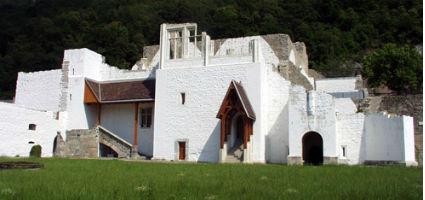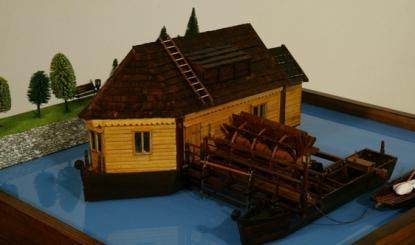2024. May 2. Thursday
Hungarian National Museum King Mathias Museum - Visegrád
 |
Address: 2025, Visegrád Fő utca 23.
Phone number: (26) 597-010
E-mail: info@visegradmuzeum.hu
Opening hours: Tue-Sun 9-17
|
The exhibition has closed for visitors.
2010.07.17. - 2010.08.20.
Museum tickets, service costs:
|
Ticket for adults
|
1100 HUF
|
/ capita
|
|
Ticket for adults
(valid for the Historic Park of Play )
|
200 HUF
|
/ capita
|
|
Ticket for students
|
550 HUF
|
/ capita
|
|
Ticket for children
(valid for the Historic Park of Play )
|
400 HUF
|
/ capita
|
|
Ticket for pensioners
|
550 HUF
|
/ capita
|
|
Ticket for families
(2 adults + 2 children)
|
2500 HUF
|
/ family
|
|
Ticket for families
(1 parent + children)
|
1400 HUF
|
/ family
|
|
Guide
("in the Royal Palace)
|
0 HUF
|
/ 10500
|
|
Guide
(in the Royal Palace, 60 min.)
|
6300 HUF
|
|
|
Guide
(/120 min./)
|
8900 HUF
|
The exhibition is about the history of the largest river in Hungary, from the Roman era to nowadays, via maps from various times.

The significant eras of sailing on the river Danube, the history of permanent and temporary bridges and remembered via scale models. The visitors will also learn about the life and work of people involved in trades somewhat related to sailing. They can also put the scale model of a typical ship mill together themselves. Thought provoking pageants direct the visitors' attention to dangers threatening the Danube, as well as the conscious co-existence with the river.
A booklet that guides the visitors through the exhibition and a museum pedagogy exercise book were published to accompany the exhibition.
The exhibition arrives from the Duna Museum of Esztergom as part of the Hungarian-Slovak project 'Treasures without Boundaries'.

The significant eras of sailing on the river Danube, the history of permanent and temporary bridges and remembered via scale models. The visitors will also learn about the life and work of people involved in trades somewhat related to sailing. They can also put the scale model of a typical ship mill together themselves. Thought provoking pageants direct the visitors' attention to dangers threatening the Danube, as well as the conscious co-existence with the river.
A booklet that guides the visitors through the exhibition and a museum pedagogy exercise book were published to accompany the exhibition.
The exhibition arrives from the Duna Museum of Esztergom as part of the Hungarian-Slovak project 'Treasures without Boundaries'.
